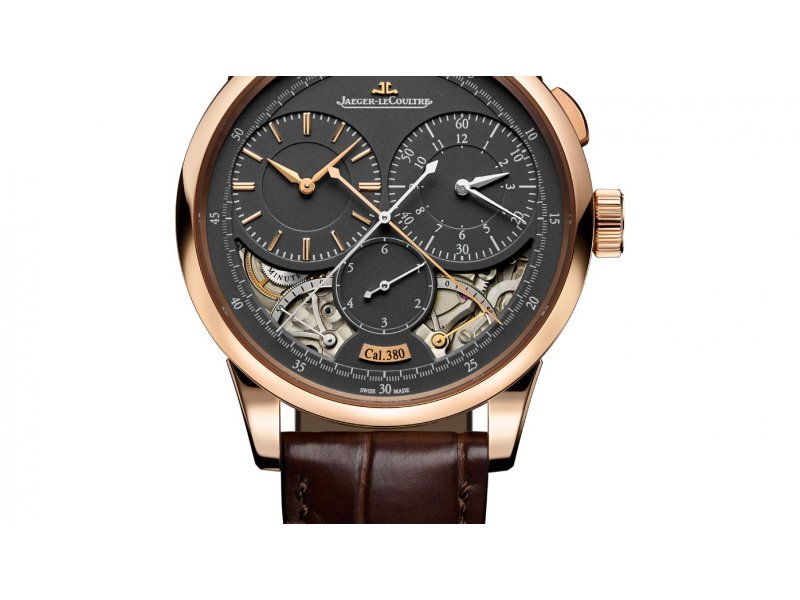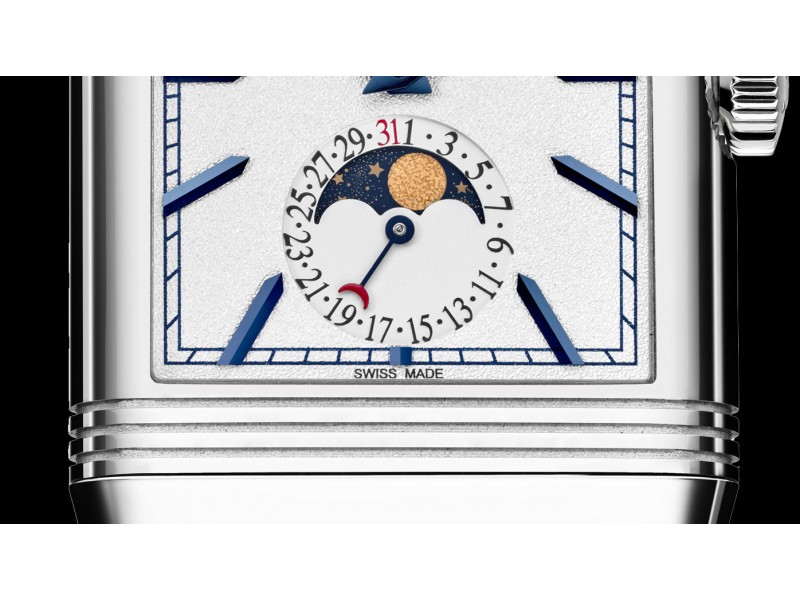
Double measure: it’s all in the name. Jaeger-LeCoultre’s Duomètre range is based on a particular principle of movement architecture, which is what defines the watches’ appearance. The watches have complications and parallel, symmetrical displays. This is nothing new in itself, except that here it is both a guiding principle and a horological choice.
Dual wing
Normally, watches are built on the principle of cooperation. The regulating organ, barrel and the gear train in between all work together, providing both accurate timekeeping and energy. The Duomètres don’t work like this. They all have two independent barrels, wound by a single crown. Each drives a different part of the movement, a complication. Jaeger-LeCoultre has given this approach to movement and complication design the name of Dual Wing. The word “wing” here is to be understood in terms of the wing of a building, rather than the wing of a bird. Each barrel is engraved with the destination of its energy. The underlying idea is that every function has its own uninterrupted power supply. This means that the trigger, the jump, the critical moment for a complication never interferes with the balance wheel and thus the accuracy of its timekeeping.

Jaeger-LeCoultre Calibre 383
Origins
Today, the range comprises five models, produced in a variety of different materials and dial colours. The first chronologically is by far the rarest. The Duomètre à Grande Sonnerie used to be known as the Hybris Mechanica, before this name was given to an entire range. It is one of the most complex models in watchmaking history, with 55 complications. It has one barrel for the time functions (hour, perpetual calendar, etc.) and another for a grande sonnerie with four gongs that sound the Westminster Chimes. The principle of partitioning the energy supply was extended to other models. In each case, the complication is rather special. They are so technically complex, in fact, that each Duomètre is virtually in a category of its own.

Duomètre à Grande Sonnerie © Jaeger-LeCoultre
Technical features
The chronograph has a running seconds hand as well as a jumping seconds. The moon phase model gives the age of the moon in both hemispheres, alongside a jumping seconds. The Duomètre Unique Travel Time is a GMT watch with two side-by-side dials, one of which features jumping hours. Finally, the Duomètre à Sphérotourbillon has a retrograde calendar and a regulator with a tourbillon that oscillates at a 20° incline as well as vertically, combined with a cylindrical balance spring. As a bonus, it features a unique stop-seconds function that works independently of the tourbillon. In each case, energy supply is based on the dual-wing concept. The external display mirrors the symmetry of the movement inside the case.

Duomètre à Quantième Lunaire © Jaeger-LeCoultre

Duomètre Unique Travel Time © Jaeger-LeCoultre

Duomètre à Sphérotourbillon © Jaeger-LeCoultre



